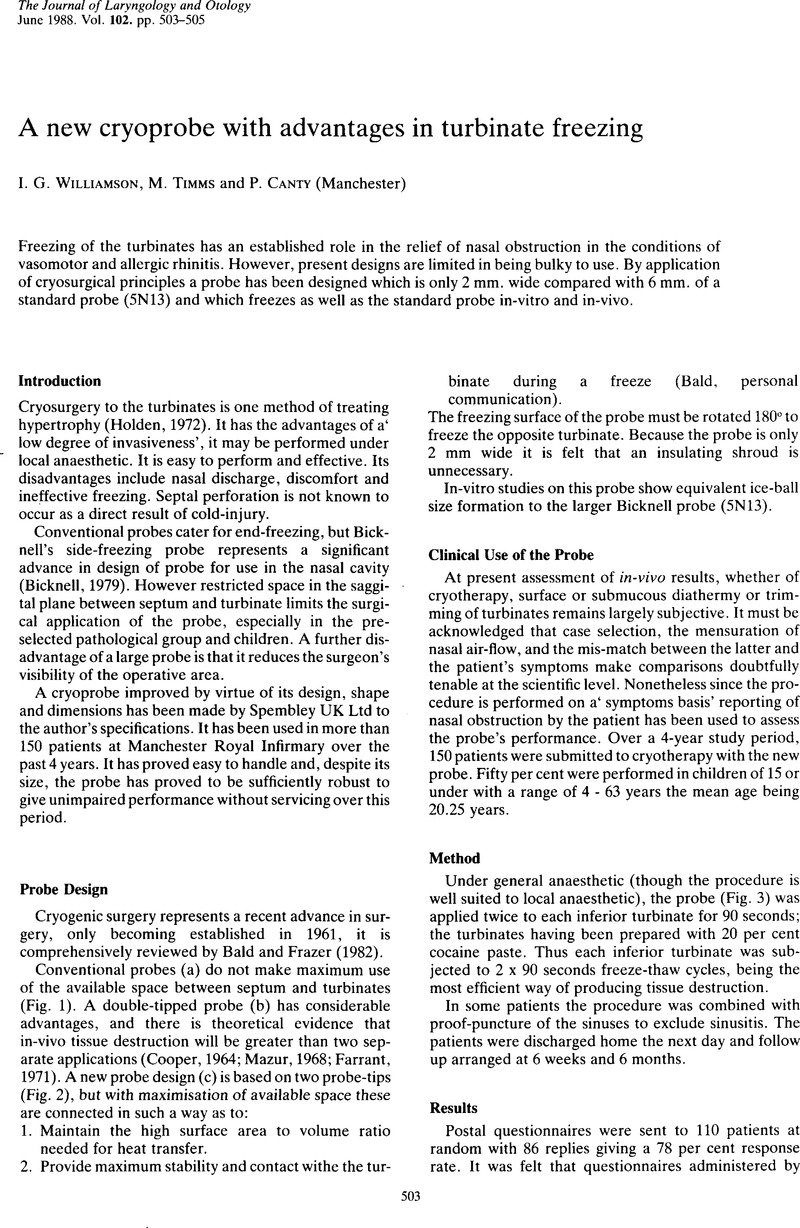Crossref Citations
This article has been cited by the following publications. This list is generated based on data provided by Crossref.
Chiossone, Edgar
Gutierrez, Jose R.
and
Emmanuelli, Juan L.
1990.
Cryosurgery of the Inferior Nasal Turbinates.
Auris Nasus Larynx,
Vol. 17,
Issue. 2,
p.
87.
O'Flynn, Paul E.
Milford, Christopher A.
and
Mackay, Ian S.
1990.
Multiple submucosal out-fractures of interior turbinates.
The Journal of Laryngology & Otology,
Vol. 104,
Issue. 3,
p.
239.
Kimmelman, Charles P.
and
Jablonski, Robert D.
1993.
The Efficacy of Turbinate Surgery for the Relief of Nasal Obstruction.
American Journal of Rhinology,
Vol. 7,
Issue. 1,
p.
25.
Lippert, B. M.
and
Werner, J. A.
2000.
Die Behandlung der hypertrophen unteren Nasenmuschel.¶Teil 1.
HNO,
Vol. 48,
Issue. 3,
p.
170.





